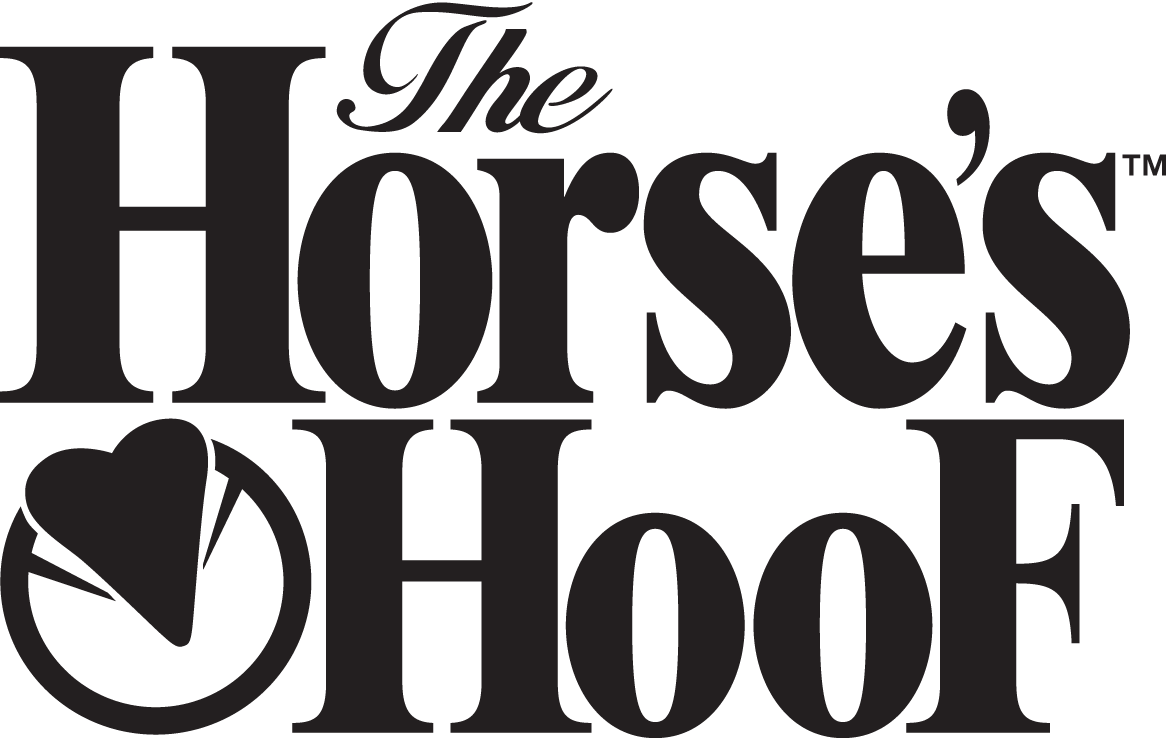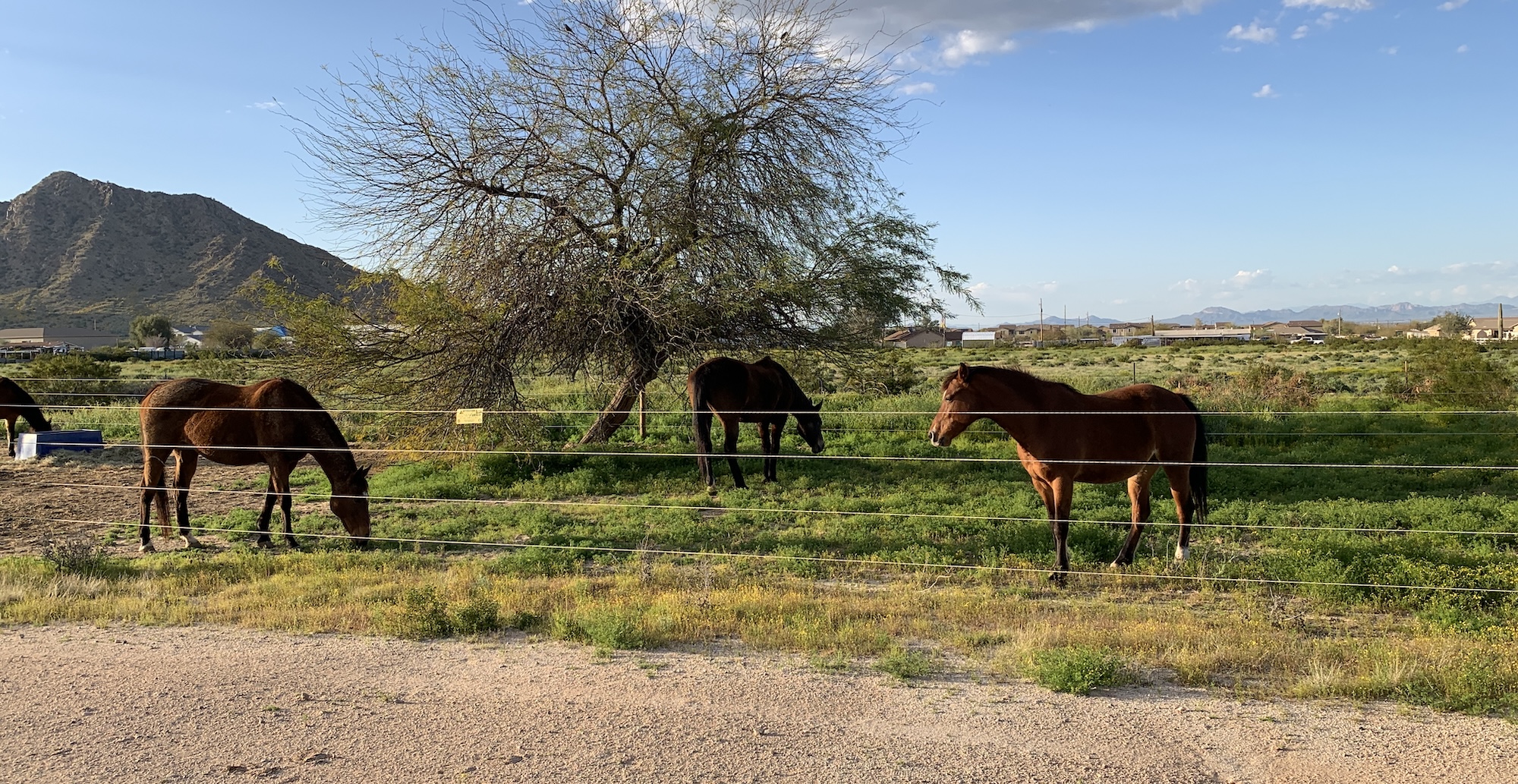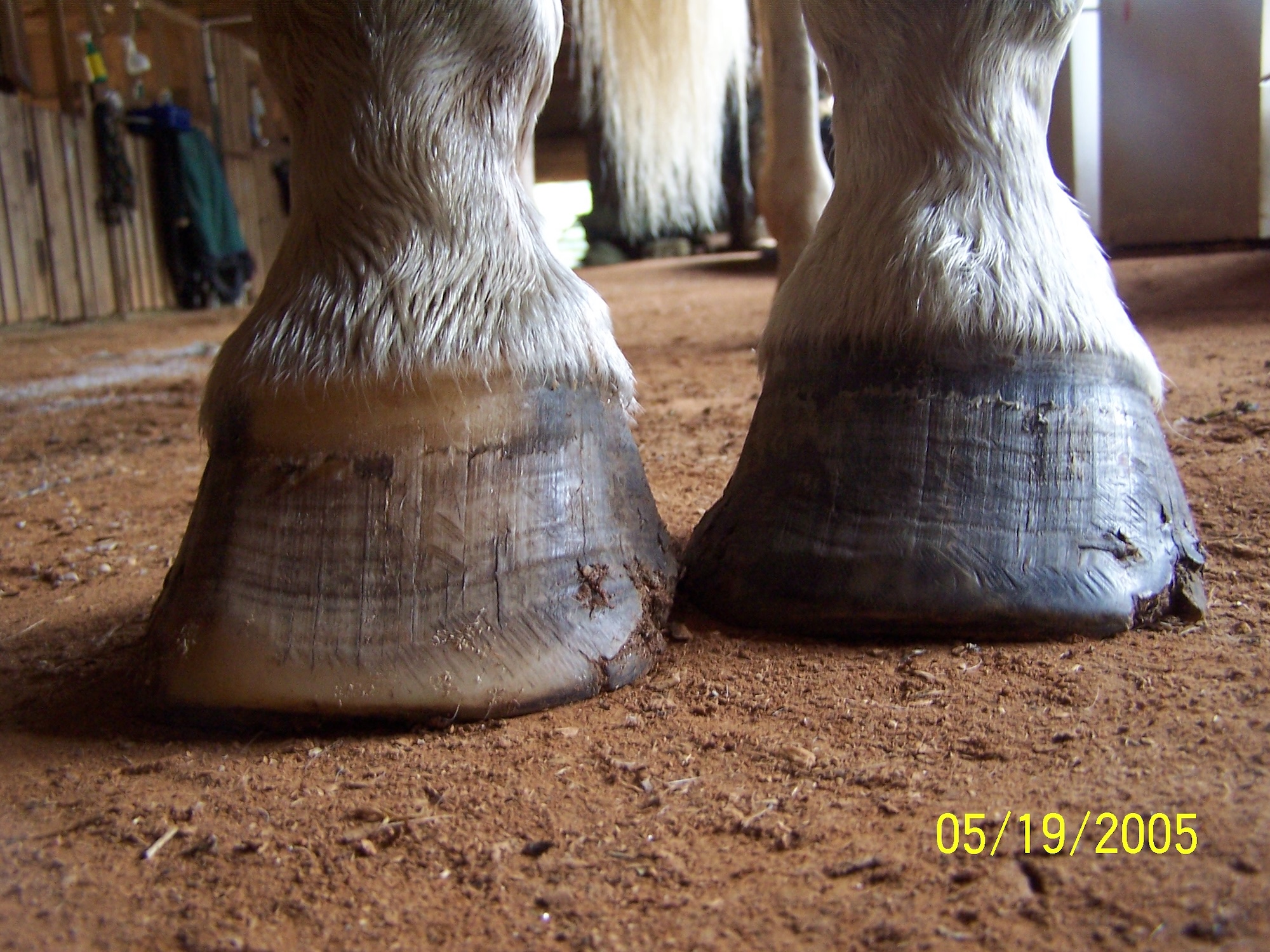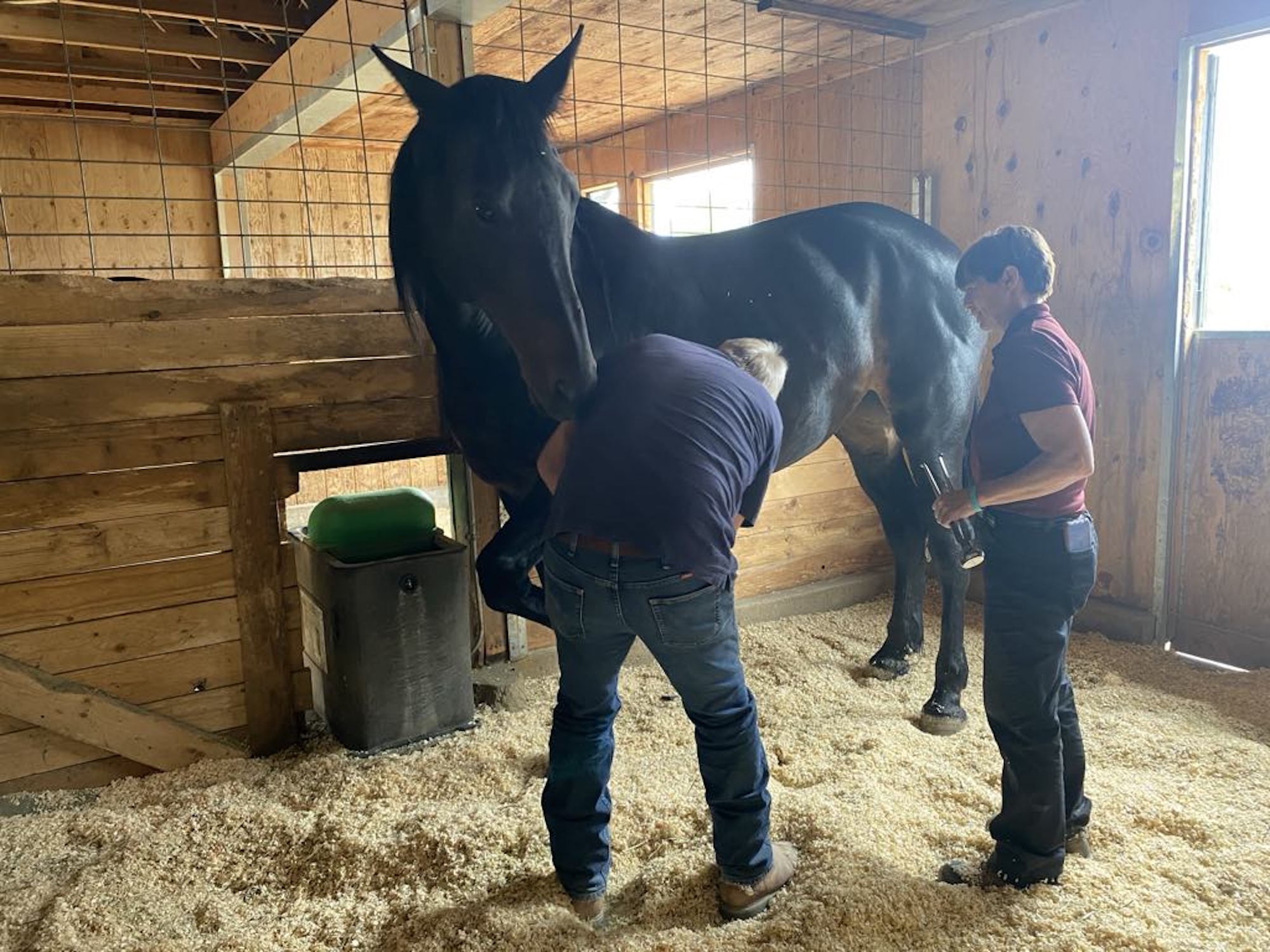Keep it simple: Natural Hoof Care is a health movement for horses centered around 3 key principles: natural living conditions, exercise, and proper trimming/maintenance of barefoot hooves.
“Natural Hoof Care” or “Barefoot Hoof Care” are generic terms that were developed in the early 2000’s to describe the modern care and use of barefoot horses in all disciplines and activities, made possible with improvements in the standards for domestic horse care. This form of hoof care is NOT simply removing the metal shoes and making no other changes! Natural hoof care is a holistic system which includes both hoof trimming techniques designed specifically for working barefoot horses, AND a horse care lifestyle which allows the horse to remain barefoot throughout its entire life. This same system can be used to rehabilitate horses from many degenerative lamenesses, including laminitis, founder, navicular, arthritis, and more.
Who created “Natural Hoof Care” as a method?
Natural hoof care methods were developed at the turn of the century (late 1990’s) nearly simultaneously in both America and Europe. Two of the most influential names are Jaime Jackson and Dr. Hiltrud Strasser, both true pioneers of natural hoof care.
Jaime Jackson, a former farrier, was the trailblazer of barefoot hoof care in America, and is the author of the much acclaimed books, “The Natural Horse,” “Horse Owners Guide to Natural Hoof Care,” “Paddock Paradise,” and so many other books and videos. His trimming system is based on his unique studies of the shape of the wild horse’s hoof, which he documented through first hand observation and studies during the 1980’s. In particular, he found that the hooves of the Great Basin Mustangs of the American West were of superior health, and that is the “wild horse model” he based his method on. He is the founder of the Association for the Advancement of Natural Horse Care Practices (AANHCP) which advocates for natural hoof care, and the Institute for the Study of Natural Horse Care Practices (ISNHCP) which provides training and certification for professionals in the wild horse model of trimming.

The Strasser Method was developed by Dr. Hiltrud Strasser, a licensed German veterinarian with a Naturopathic and Holistic Medicine emphasis (rather than Modern “Big Pharma” Medicine). Dr. Strasser spent decades studying and researching the causes and cures of lameness and other common health problems of domestic horses. She came to realize that returning to the root cause and providing horses with their basic physiological needs could restore their health. She also studied wild horse hoof form of horses around the world, looking for solutions to the many hoof problems of domestic horses. In 1993, she opened the Institute for Hoof Health and ESHOP (European School for Hoof Orthopedics) in Tuebingen, Germany — a center for study and learning, where many hoof care specialists in Europe obtained their schooling. In her holistic hoof clinic, equine patients from around Europe were routinely healed and restored to a fully active life, after being given up as hopeless and incurable by conventional veterinary medicine. Dr. Strasser is the author of several textbooks on lameness and healing, reference books on natural boarding for horses, and many articles for both horse and veterinary journals. Some of her books translated into English include: A Lifetime of Soundness, Shoeing, A Necessary Evil?, Who’s Afraid of Founder? and Navicular No More.

It is no secret that Strasser and Jackson passionately disagreed with each other, and so did their students. However, a blending of their two different approaches, and the many branches that evolved distinctly from them, created the general framework of the barefoot hoof care movement that we know today. Jackson emphasized a practical approach, allowing nature to help slowly improve hoof form, with gentle and gradual guidelines for trimming. Strasser developed a powerful trimming technique, using “surgically” precise trimming to drastically alter hoof form for the pathological horses in her veterinary hoof clinic.
From Jackson, we have learned to appreciate the significance of the wild horse model and its application in the lives of domestic horses. From Strasser, we have learned the direct link between horse’s living conditions and the health of their hooves. Trimming techniques are quite different between these two key figures, but the points they both agree on are: heels are kept low with bulbs nearly on the ground, hairline is straight, quarters are arched (“scooping”), bars are straight and tapered, hooves are wide and round in shape, and entire hoof expands slightly upon weight-bearing (also called hoof mechanism).
Jackson and Strasser both believe that natural living conditions are key to the health of the horse and their hooves. Jackson developed the concept of “Paddock Paradise” to provide a more natural lifestyle on a small acreage. Strasser was already implementing that basic concept at her Hoof Clinic in Tuebingen, Germany. A Paddock Paradise is simply an innovative living area for your horse OUTSIDE of a stall. The goal is to inspire movement, allow access to forage for continuous eating (rather than “meals”), and create a more natural herd environment.
The influence of Jackson and Strasser is far reaching. If we think of barefoot hoof care as a “giant tree”, we will find Jaime Jackson and Dr. Hiltrud Strasser at the very top of the tree. The tree branches underneath them are the hundreds of hoof care professionals they educated and influenced over the decades, who then took what they learned and often created something uniquely their own – and passed that on to their students. Most influential hoof care practitioners were students of, or give abundant credit to, these 2 influential natural hoof care teachers. Even hoof care influencers who claim to be opposed to either or both will have in their background history the evidence of learning from, or being influenced in some way by these two voices. We all build on top on someone else’s work.
There are a few pioneers who were adjacent to these key figures, but working very separately. Dr. Robert Bowker, VMD, PhD was Professor of Anatomy and Director of the Equine Foot Laboratory at Michigan State University College of Veterinary Medicine. He was able to research hoof function beginning in the early 1990’s — with all of his discoveries pointing towards bare hooves, which eventually directed him towards natural hoof care in the mid-2000’s, and his contributions have been absolutely priceless. Bowker’s discoveries greatly influenced the trimming methods of Pete Ramey, James Welz, and many others. There are also former farriers such as KC La Pierre (who developed Applied Equine Podiatry), and others around the world, who realized that there had to be a better way to care for hooves, and have created methods that parallel natural hoof care.
What makes it “Natural Hoof Care”?
Natural hoof care (barefoot hoof care) applies specialized barefoot trimming techniques along with improved living conditions to aid in the development of total hoof health. Horses that were previously unable to perform using traditional trimming/shoeing methods, are now able to fully function! This is true high-performance barefootedness, with horses used in endurance, rocky trail-riding, competitive driving, jumping, roping, barrel racing, dressage, polo, flat racing, and more.
Horses with founder, navicular, ringbone and other ossifications, contracted hooves, “heel pain syndrome”, and a host of other chronic illnesses and lamenesses are finding improved health and a genuine return to soundness with natural hoof care. Is this the “magic bullet” cure for everything? No, it is simply the direction to health. When the hooves are healthy, they function correctly. In order to have truly healthy hooves with optimal blood circulation and full function – they must be barefoot. It’s a state of well-being and equilibrium, and from that can often come surprising improvements in healing.
What is unique in this “new” approach to barefoot hoof care is that it now extends to the complete lifestyle of the horse. From this lifestyle, the barefoot hooves become strong, healthy, and fully functioning, and the entire immune system of the horse is strengthened naturally. Many hoof conditions such as laminitis, navicular, and poor hoof quality can be completely healed, and other systemic problems (such as allergies and metabolic problems) can disappear when the entire lifestyle and diet/nutrition are optimized!
There are basically 3 main parts to natural hoof care, each an integral part of the whole system.
1. Natural Living Conditions: This means freedom of movement (no box-stall confinement) – optimally living in a pasture or large paddock for 24 hours a day/7 days a week in the company of other horses (herd lifestyle). Horse clothing (bandages, wraps, blankets, etc) is generally to be avoided unless truly necessary. Horses should be fed a forage-based diet with vitamin/mineral balancers, and allowed access to grass or hay free-choice as much as possible, utilizing slow feeder hay nets if needed. The choice of grass or hay will depend on your unique situation and each horse’s individual needs; there are pros and cons to both grass diets and hay diets.
2. Exercise: Very important! The more movement, the healthier your horse’s hooves will become. Hand-walk or ride horses (depending on situation) as much as possible, aiming for the natural amount of movement of 10+ miles per day. For horses in transition, spreading hay out in little piles, taking them for frequent short walks on non-concussive ground or in hoof boots, and keeping them in the company of many other horses will all go a long way to encouraging movement. Set up a “Paddock Paradise” of your own, to encourage natural movement. Be creative!
3. Proper trimming of the barefoot hooves, as necessary: Hooves must be trimmed or maintained to their natural and proper physiological form. If the hoof form is not healthy, the hooves must be trimmed by someone with the knowledge and training to perform a natural barefoot trim. The main emphasis will be on improving hoof form, which is the key to hoof and horse health. This natural trim is often different from what has been considered “normal” in our modern era, yet it is the correct shape for the horse’s hoof, based on decades of studies of natural equines – both wild horses and domestic horses living optimal lives, who maintain their own hooves quite well.
Even if you have limitations, don’t be afraid to try natural hoof care! This is about making whatever improvements you can to enrich your horse’s life. It only makes sense that we provide our horses with the key elements they need to be happy and healthy! The basic principles are actually very simple: a herd lifestyle outside of a stall including a healthy forage-based diet, lots of daily exercise, and well-maintained barefoot hooves.





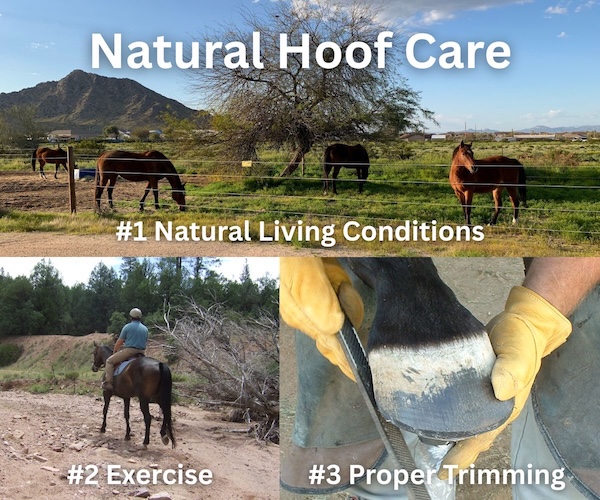
by Yvonne Welz, The Horse’s Hoof 2025
For listings of Certified Barefoot Trimmers, please visit our Barefoot Resources page.
For more historical barefoot info, please read: “A Timeline of the Barefoot Movement” and “50th Issue Retrospective”.
See the full content listing of all issues of The Horse’s Hoof Magazine! We also provide instructions on how to read the issues for free on Hoof Help Online.
For a detailed listing of all articles on The Horse’s Hoof website, please visit our Article Directory.
